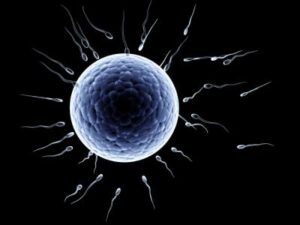
As a woman ages her fertility naturally declines such that by the time she reaches menopause her “ovarian reserve” is depleted, meaning that she has few to no eggs – oocytes – remaining in her ovaries.
Some women, however, have problems with fertility relatively early in life and this may be due to premature ovarian decline (reduced number and quality of eggs). Although it’s not clear why this occurs, it’s likely that both genetic and environmental factors play a role.
In the first genome-wide association study on this topic, researchers from Stanford, UCSF, and Kaiser Permanente have attempted to identify genetic and environmental factors associated with markers of ovarian reserve. The study enrolled around 230 women with European ancestry and 200 with African-American ancestry, aged 25-45. The women were recruited from the general population and were of normal reproductive health.
How is Ovarian Reserve Measured?
There are a number of clinical tests for measuring a woman’s remaining egg pool, though no single one is a perfect proxy for ovarian reserve. Blood levels of hormones involved in follicle development – follicular stimulating hormone (FSH) and anti-Mullerian hormone (AMH) – are typically measured. Physicians also use ultrasound to count the number of antral follicles, the structures in the ovaries that release an egg when a woman ovulates. Like ovarian reserve, AMH levels and antral follicle count both decline with age. Conversely, levels of FSH go up as a woman ages and higher levels are typically found in women with reduced ovarian reserve.

This figure shows that AMH and antral follicle count parallel declining ovarian reserve, while FSH levels increase as a woman’s egg pool declines. The relative levels are arbitrary in this graph as it is just meant to show the general relationship between different markers of ovarian reserve.
The researchers first confirmed that levels of two fertility-related hormones – FSH and AMH (see sidebar) – correlated with maternal age and antral follicle number, though they found more variability in the African-American women than in the European women. They also found several genetic factors that may correlate with antral follicle count in the African-American group but did not find any factors for this trait in the European cohort.
These findings are very preliminary and larger studies are needed to confirm and expand upon these results.
Of course, the environment can also play an important role in fertility. Although the findings were not definitive, the researchers found some indication that women who smoked had a higher rate of antral follicle decline as they got older.
The data also suggested that oral contraceptive use might lead to reduced follicle count, though for the most part this only seemed to be the case in African-American women.
Overall, these findings provide preliminary results for a very complex biological phenomenon.
If the identified genetic markers are confirmed in future studies, they could be used to identify women at risk for premature ovarian decline and possible fertility problems. More research on environmental factors influencing fertility may also help in preventing, delaying, or treating ovarian decline.